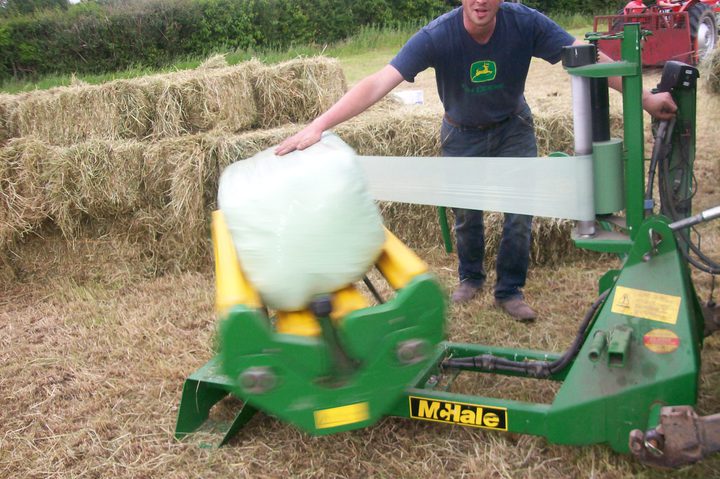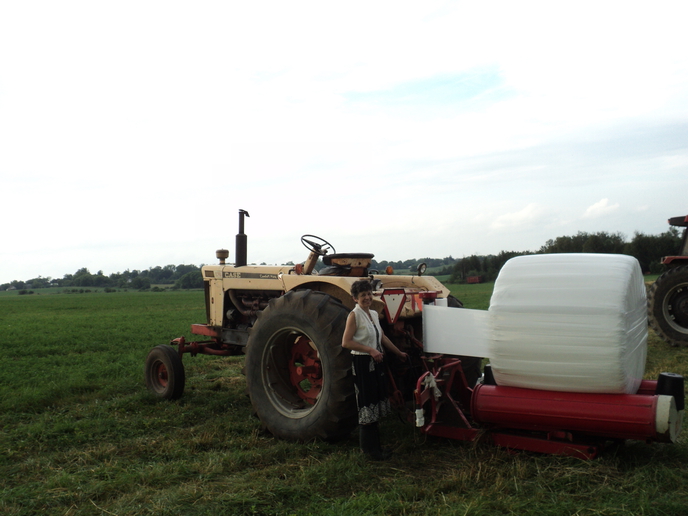Well I hate to tell you guys across the pond but
we beat you all to it! Round bale silage was invented
by a Brit in the 1980s. The method of conserving
silage in round bales in silage was pioneered in
the 1980"s by a British farmer called Lloyd
Forster. The original method was to put them into
big plastic bags sealed with cable ties which was
a very slow and tedious job and the results were
"mixed" to say the least. Then whilst travelling
through Australia Mr. Forster was approached by a
firm that was making a machine to wrap bales in
plastic. However,the first successful machine for stretch wrapping
silage bales was built by Kverneland in
association with Mr. Forster and a British animal feed company
called Volac. We bought one almost as soon as they
appeared on the market because we were sick of
making poor quality hay due to a run of very wet
summers we were having at the time. If made
correctly, round bale silage is wonderful stuff.
Lloyd Forster
Edit. While I was researching this, I found that sadly Mr. Forster died last April.



